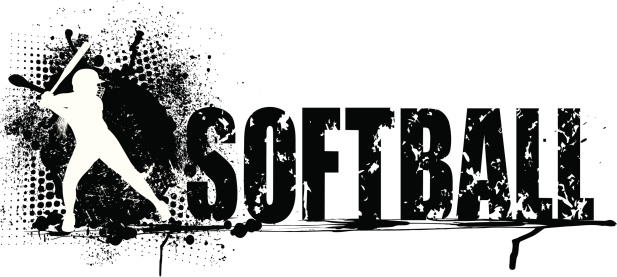Be Prepared Every Pitch:
- Communication is important when playing the outfield.
In softball, three players are responsible for the entire outfield, which means communication is crucial. Talking in the outfield allows a player to evolve from thinking your teammate will get the ball to knowing she’ll get it. Likewise, if a wild throw is made in the infield and no one is there to stop it from rolling to the fence, a run can be easily scored — outfielders are incredibly important.
Nothing is worse than seeing two outfielders looking each other in the eyes as the ball falls between them, especially if the game is on the line. These errors happen because of a lack of communication between the outfielders.
The Centerfielder is Chief! Balls that fall between outfielders are sometimes the hardest to catch because there is always some uncertainty as to who should get it, who will get it, and if a collision will occur in the process. Uncertainty leads to hesitation, and hesitation leads to dropped balls. Instead of playing the guessing game, one player has to take charge — and that’s the center fielder.
A good center fielder will approach the position with an aggressive mentality. She should want any ball she can get to. Whatever the case, the ball cannot drop. The center fielder needs to ensure everyone knows who is catching the ball.
Pop-ups between the Infield & Outfield
Balls that land between the infield and outfield can be confusing. If it’s on the dirt, it’s probably the infielder’s ball, but what about balls that land on the grass a foot away from the dirt? In these cases, it could be fair game for both the infielder and outfielder. An infielder with a good drop step has a good chance of getting it, but an outfielder who is running in will always have the best angle.
Unless she is playing at the fence, an outfielder should be able to catch these balls and call off the infielder. However, that doesn’t mean the infielder should sit back and assume the outfielder has it. She should sprint back as hard as she can until called off, and then run to back up the outfielder. Working together, no ball should drop between the infield and outfield.
- You are the last line of defense so make sure everyone and everything is covered. The outfield is truly the last line of defense against any hit. If a ball gets past them, only the fence can stop it (assuming there is a fence!). The easiest way to cover the most green is to communicate with your teammates and act as each others back-ups. Communication and teamwork are absolutely crucial for having a successful outfield, so always make sure everyone knows their role and is ready to go all out for the ball!
- Let your teammates know if you are playing deep/shallow or for the pull/opposite field.
- Always call the ball if you can make the catch.
- Have a good relaxed ready position to get a good jump on the ball.
- Outfielders should step into every pitch. This will allow you to have your weight on the balls of your feet and ready to move in any given direction.
- Be mentally prepared for every situation.
- Before a player comes to the plate, review all of the possible options: Know where the batter likes to hit the ball
- Know where you should throw the ball and where to be on backups.Every outfielder has an inherent backup responsibility:
- The center fielder backs up second base
- The right fielder backs up first base
- The left fielder backs up third base
Each outfielder should be sprinting to back up their respective bag after every pitch, depending on where the lead runner is. That is, if there is a runner at first base, the center fielder should be heading to back up second base on the chance that a throw is made there. Likewise if a throw is on its way to first base, the right fielder should already be in position to back up a wild throw.
- Never be a spectator! The outfielders also back each other up. If a ball is hit to right field, the center fielder will be the right fielder’s back-up. The same goes for left field. If the left fielder is going for the ball, the center fielder should be sprinting to back her up; the same goes for the right fielder. If the center fielder is going for the ball, the right fielder should move to back her up if the center fielder is in right-center, and vice versa for the left fielder.
- There is a place for you on every play!
- Know the field and the weather conditions.
- Before the game, take a look at the outfield and identify any hazards such as a rough and bumpy ground, sprinkler heads and water drains.
- Check the wind direction, the angle of the sun and at night the lights on the field, it might have an effect on the ball.
- Never be caught off guard when the ball takes a bad hop, skips on wet grass or gets caught in the sun.
One of the most important forms of communication between the outfielders is letting each other know where the fence is, or how close a player is getting to the fence before she hits it. Especially when the game is on the line, you don’t want to see an outfielder miss the ball after hesitating because her teammates didn’t help her.
